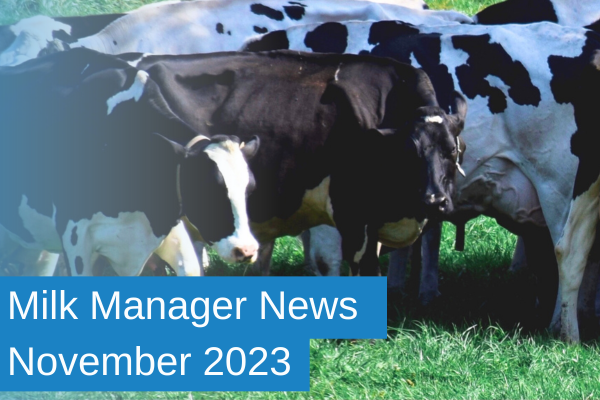MMN November 2023 – The Low-Down on Winter Dysentery
10 November 2023Every year we hear reports of winter dysentery outbreaks in dairy herds. The clinical signs of the disease can be dramatic, with a significant reduction in milk production in conjunction with profuse, watery diarrhoea. Like most cattle diseases the presentation and causes can be variable with a combination of nutritional, managemental and infectious disease risk factors implicated which can vary from farm to farm.
In its simplest form, winter dysentery is a highly contagious disease affecting the gastrointestinal tract and although not fully understood, a particular strain of coronavirus is implicated as a cause. It spreads rapidly throughout the herd with the majority of animals affected, mainly being transmitted by the faecal-oral route from faecal contamination of feed or water. However, respiratory secretions can also carry the virus, further increasing the rate of transmission. The disease can occur in all cattle but is more often seen in adult dairy cows during the winter months and newly calved cows tend to be more severely affected. Symptoms include:
- Extremely watery and foul-smelling diarrhoea (which may be explosive).
- Blood may be present in faeces.
- Sudden reduction in milk (up to 50% in some cases).
- Reduced feed intake.
- Dehydration.
- Mild coughing and nasal discharge may be present.
- From initial symptoms in one or two animals, the disease spreads quickly with most cattle affected within a fortnight. Symptoms can last up to a week, but milk production can take much longer to recover. The condition is rarely fatal.
In the early stages, symptoms may be indicative of a nutritional issue, but the rapid spread and severity of the disease means that diagnosis is fairly quick and easy.
Faecal sampling to confirm diagnosis of coronavirus by ELISA has poor sensitivity and can result in false negative results, so many outbreaks are not confirmed by testing.
However, it is important to be aware that the symptoms are similar to other diseases such as Salmonella (which is very common) and Schmallenberg, so it is advisable to contact your vet for immediate investigation and to consider the full range of differential diagnoses.
From a disease surveillance perspective our SRUC Veterinary Services colleagues are particularly interested in investigating herd level outbreaks of milk drop and scour.
There is no specific treatment for classical winter dysentery although cows showing signs of dehydration will benefit from supportive fluid therapy.
To combat dehydration, good access to clean, fresh water is very important so ideally there should be a minimum of 10cm water trough space per cow and more than one water trough per group of cows. It is a good idea to provide free access rock salt to encourage water intake to aid rehydration.
Preventive measures include making sure all staff (including external visitors e.g. vets, consultants, hoof trimmers) wear clean, sanitised footwear and clean clothing upon entry to the farm, as well as disinfecting footwear, clothing and equipment before leaving the farm. Limit any non-essential personnel coming onto the farm during an outbreak.
Purchased cattle can also bring in the disease, so quarantining of purchased stock should take place for two weeks to ensure they are not carrying the disease and allow time for health checks for other potential diseases.
Factors that can increase the risk of clinical disease include dietary changes (often post-housing), colder temperatures and high stocking rates, especially when ventilation is poor. The presence of other disease-causing organisms may also be a contributing factor. The virus can survive longer in colder conditions and when UV light levels are low.
Once the herd has recovered, herd immunity should help reduce the likelihood of another outbreak for around five years. The following podcast featuring SRUC’s Colin Mason (Veterinary Centre Manager at Dumfries), discusses milk drop syndrome which can be related to winter dysentery and may be of further interest:
Lorna MacPherson, lorna.macpherson@sac.co.uk; 07760 990901
Sign up to the FAS newsletter
Receive updates on news, events and publications from Scotland’s Farm Advisory Service

